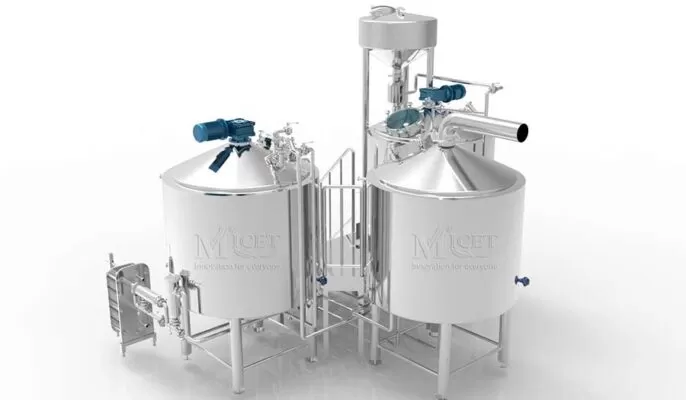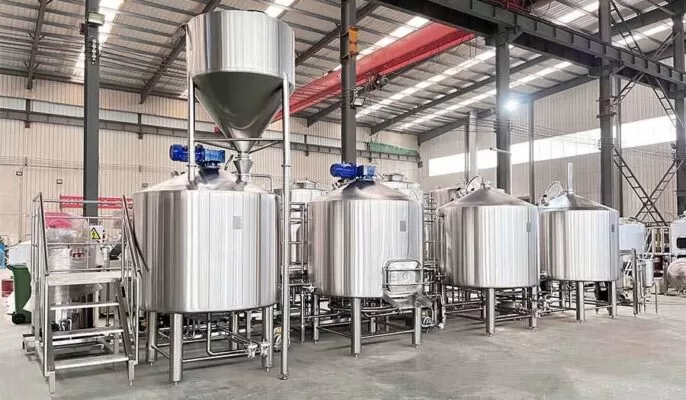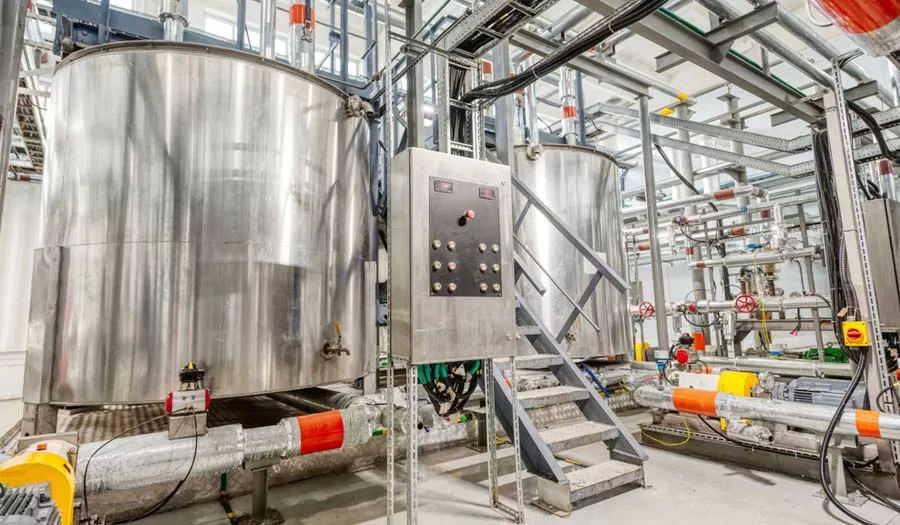Home brewing beer is a fun, rewarding hobby that allows you to create customized brews from the comfort of your own home. With the right home beer brewing equipment, you can craft high-quality beers to enjoy and share. This comprehensive guide will provide everything you need to know to get started with home brewing.
Overview of Home Beer Brewing Equipment
When getting started with home brewing, having the proper equipment is essential. Here is an overview of the key pieces of equipment you will need:
Brew Kettle – The brew kettle is used to boil wort (unfermented beer) and is a key piece of brewing equipment. Kettles are typically made from stainless steel and range from 5-15 gallons.
Fermenter – The fermenter is a large jug or carboy that allows the beer to ferment. Food-grade plastic or glass carboys are commonly used.
Airlock – An airlock allows carbon dioxide to escape during fermentation while preventing oxygen and contaminants from getting in.
Bottling Bucket – Used for bottling finished beer, this food-grade bucket has a spigot for filling bottles.
Bottles – Home brewed beer is bottled in glass bottles with pry-off caps specifically designed for home brewing.
Hydrometer – This measures the beer’s specific gravity to monitor fermentation and alcohol content.
Sanitizer – Everything must be thoroughly sanitized to avoid bacteria or wild yeast contamination. No-rinse sanitizers are commonly used.
Cleaning Supplies – Cleaners for washing equipment, brushes, etc. Proper cleaning prevents off-flavors.
Thermometer – Used to monitor mash and boil temperatures precisely. Digital instant-read thermometers are very handy.
Tubing – Used for transferring liquids with a siphon or pump. Food-grade plastic tubing works well.
Racking Cane – This rigid plastic tube is used with tubing to siphon beer between vessels.
Bottle Capper – A simple hand-held tool used to seal the bottle caps. Bench-mount options are also available.
Wort Chiller – Cools hot wort quickly before pitching yeast. Immersion and counterflow chillers are common types.

Applications and Uses of Home Brewing Equipment
Home beer brewing equipment has a wide variety of applications throughout the brewing process:
Brew Kettle – Boiling wort, clarifying wort, sanitizing equipment
Fermenter – Primary fermentation, secondary fermentation, maturation
Airlock – Protecting fermenting beer from oxygen and contaminants
Bottling Bucket – Mixing priming sugar, bottling finished beer
Bottles – Storing, carbonating, and serving finished beer
Hydrometer – Measuring original and final gravity, monitoring fermentation
Sanitizer – Sanitizing equipment, bottles, carboys, caps, small parts
Cleaning Supplies – Washing yeast/trub from equipment, general cleaning
Thermometer – Monitoring strike water, mash, sparge, and boil temperatures
Tubing – Transferring wort and beer between vessels
Racking Cane – Siphoning clear beer from trub post-fermentation
Bottle Capper – Capping bottles for carbonation and storage
Wort Chiller – Quickly cooling boiled wort before aerobic yeast pitching
Additional – Stirring paddles, mesh bags, air pumps, kegging equipment, filters, instruments etc.
Equipment Selection Guide
When equipping your home brewery, consider the following guide for selecting the right gear:
Brew Kettle
- Material – Stainless steel is durable, sanitary, and maintains heat well. Aluminum can react with wort.
- Volume – Match kettle size to batch size: 5 gal kettle for 2.5-3 gal batches, 10 gal for 5-6.5 gal.
- Features – Thermometer port, volume markings, ball/butterfly valve, wide bottom.
- Budget – More expensive kettles have thicker material, better heat transfer and durability.
Fermenter
- Material – Food-grade plastic (PET, HDPE) or glass (Pyrex). Avoid crystal.
- Size – 1-2 gal larger than batch size. Ex: 6.5 gal fermenter for 5 gal batch.
- Type – Carboy with narrow neck and airlock or bucket with lid and drilled hole for airlock.
- Wide/narrow mouth – Ease of cleaning vs. using carboy brush.
Airlock
- Three piece with rubber stopper for carboy, one piece for bucket lid.
- Can use blowoff tube instead, allows krausen and CO2 to escape fermenter.
- Pick type compatible with fermenter. A universal carboy bung fits various size openings.
Bottles
- 12-22 oz pry-off glass bottles designed for home brewing. Avoid twist-off.
- Enough bottles for 1-2 cases is good for 5 gallon batches. Reuse commercial beer bottles.
- Optionally use flip-top Grolsch-style bottles.
- Specialty bottles for big beers – champagne, belgian 750 ml, etc.
Bottle Caps
- Oxygen-absorbing (O2 blocking) caps recommended. Avoid plastic caps.
- Match cap size to bottle openings – regular, large, belgian, etc.
- Buy capper to match cap type – bench capper for standard caps.
- Crown caps with thermo-plastic or Teflon lining work well.
Cleaning and Sanitizing
- Cleaners – PBW, Oxiclean, B-Brite, other alkaline cleaners. Remove organic soils.
- Sanitizers – No rinse options like Star San, Iodophor. Kill microbes, sanitize surfaces.
- Brushes – Carboy brush, bottle brush. Jet washer for hard-to-reach spots.
- Buckets, soft scrubs, sponges – For general cleaning and scrubbing equipment.
Key Specifications for Equipment
Use these key specs when selecting home brewing gear:
| Item | Specs to Consider |
|---|---|
| Brew Kettle | Volume, material thickness, height/width ratio |
| Fermenter | Volume, material type (glass/plastic), openings |
| Airlock | Types of stoppers, 3-piece/S-type, universal stopper |
| Bottles | Volume, type (flip-top, pry-off, specialty), quantity |
| Thermometer | Accuracy, probe type, temperature ranges |
| Hydrometer | Range, increments, proofing, cylinder material |
| Tubing | Inner diameter, wall thickness, material type |
| Bottle Capper | Type of caps, size range, bench vs. hand |
| Cleaner | Alkaline vs. acidic, concentration, contact time |
| Sanitizer | No rinse vs. rinse, dilution ratio, contact time |
Choosing equipment that meets certain design specifications and standards helps ensure good performance. Prioritize quality, safety, reliability, and compatibility when selecting parts for your home brewery.
Supplier and Product Recommendations
There are many great options for homebrew equipment from specialty suppliers. Here are some recommended products and vendors to consider:
Item|Product Recommendation|Supplier Options :—|—:|—:|—: Brew Kettle | 10 gal Stainless Steel Kettle | MoreBeer, Northern Brewer, Amazon Fermenter | 6.5 Glass Carboy | Adventures in Homebrewing, MoreBeer Airlock | 3-piece Universal Carboy Bung | MoreBeer, Northern Brewer, Amazon Bottles | Amber 12 oz Flip-top Bottles | MoreBeer, Northern Brewer, Amazon Thermometer | Thermoworks Thermapen | MoreBeer, Northern Brewer, Amazon Hydrometer | Triple Scale Hydrometer | MoreBeer, Northern Brewer Tubing | 5/16″ ID Clear Vinyl Tubing | MoreBeer, Northern Brewer, Amazon Bottle Capper | Bench Capper with Magnetic Bell | MoreBeer, Northern Brewer, Amazon Cleaner | PBW 5 lbs | MoreBeer, Northern Brewer, Amazon Sanitizer | Star San 16 oz | MoreBeer, Northern Brewer, Amazon
Buying equipment kits or all supplies from one shop can simplify purchases, shipping, and assembly. Compare prices between shops.
Estimated Equipment Costs
Prices can vary significantly based on kettle size, material types, brand names, and included accessories. Here are rough estimates:
- Basic brew kettle – $100-$200 for a 5-10 gallon stainless kettle with valve
- Glass carboy fermenter – $30-$60 per 6-6.5 gall shatter-resistant carboy
- Airlock and bung – $3-$10 per airlock, $5-$15 per rubber bung stopper
- Case of 12 oz pry-off bottles – $15-$30 per case of 2-3 dozen bottles
- Bottling bucket with spigot – $25-$50 for 5+ gallon food-grade bucket
- Hand-capper for bottles – $15-$50 basic to deluxe capper models
- Thermometer – $15-30 for digital instant read probe
- Hydrometer – $10-$25 for triple scale floating type
- Cleaner and sanitizer – $15-$40 per 5 lb tub or gallon jug concentrate
- Tubing and racking cane – $5-$15 each
Expect to spend $300-$800 for a complete small-scale homebrew setup with a kettle, fermenter, accessories, and ingredients to brew 5 gallon batches. Equipment costs scale with production volume.
Installation, Operation, and Maintenance
Proper installation, operation, and maintenance helps maximize performance and longevity of home brewing equipment. Follow these tips:
Installation
- Review manufacturer assembly and setup instructions
- Choose a dry, clean space for storing gear with sturdy work surfaces
- Position vessels to allow sequential brewing workflow from kettle to fermenter
- Install thermometers, valves, airlocks, accessories per included directions
Operation
- Follow safety procedures – lift safely, use protective gear, avoid burns
- Monitor process parameters – temperatures, gravity, times, pH etc.
- Control valves to fill, transfer, drain vessels as needed
- Take notes each brew day to improve processes
Maintenance
- Disassemble and clean equipment thoroughly after each use
- Replace gaskets, O-rings, stopper, poppets, and parts as needed
- Check for leaks, cracks, wear, blockages, calibration
- Lubricate o-rings and stoppers periodically
- Follow manufacturer maintenance guidelines
By properly installing equipment, carefully controlling brewing operations, and diligently maintaining gear, you can expect long, productive performance from your home brewing system.
How to Select a Reliable Equipment Supplier
Choosing a reputable supplier for home brewing equipment ensures you receive high-quality gear that meets your needs. Consider the following when selecting a vendor:
- Specialization – Suppliers focused on homebrewing offer the best selection.
- Range – Look for a wide variety of kettles, fermenters, accessories to choose from.
- Affordability – Competitive pricing, bulk discounts, promos, and sales help save money.
- Customer service – Responsive support staff that are knowledgeable about products.
- Reputation – Check reviews and community feedback on retailers. Avoid shady sellers.
- Shipping – Reasonable rates, tracking, insurance, prompt delivery, and returns.
- Website – Easy to use site with filtering, detailed product info, images, guides.
- Location – Saves on shipping if you can buy locally or pick up orders.
The best home brewing suppliers like MoreBeer, Northern Brewer, and Adventures in Homebrewing check all these boxes. Buying directly from manufacturers like Ss Brewtech or Spike Brewing can also make sense for big investments.
Pros and Cons of Key Equipment
| Equipment | Advantages | Disadvantages |
|---|---|---|
| Brew Kettle | Durability, efficiency, customizable, heavy duty | Expensive, heavy when full, risks hot side oxidation |
| Fermenter – Glass Carboy | Impermeable, easy to sanitize, visually inspect | Heavy, fragile, cleaning difficulty |
| Fermenter – Plastic Bucket | Lightweight, easy to clean and move, wide opening | Oxygen permeability, scratched surfaces |
| Bottling Bucket | Built-in spigot, marks volume levels, portable | Spigot can get clogged, plastic scratches over time |
| Airlock | Prevents oxygen exposure, simple, inexpensive | Risk of contamination if not filled properly |
| Thermometer | Fast accurate readings, various probe types | Expensive, probes fragile and require calibration |
| Hydrometer | Measures gravities precisely, inexpensive | Messy readings, fragile, multiple needed to cover gravity ranges |
| Auto-Siphon | Convenient transfer between vessels, minimizes oxygenation | Fragile rigid plastic, tricky initial siphon start |
As seen above, each type of equipment has tradeoffs between benefits and downsides that should factor into purchase decisions for your home brewery.

FAQ
What are the most essential pieces of equipment for homebrewing?
The absolute basics are a brew kettle, fermenter, airlock, bottles, caps, sanitizer, and critical accessories like a thermometer and hydrometer. Start with high-quality gear in these essential categories.
What size brew kettle do I need for 5 gallon batches?
A 10+ gallon brew kettle allows you to boil 5 gallon batches with plenty of headspace to prevent boil overs. Go bigger if you may scale up.
How many bottles should I get?
Plan for 48-54 12oz or 22oz bottles for a typical 5 gallon batch. This allows you to bottle two cases and have extras for sampling. Reuse commercial bottles to save money.
Can I use plastic milk jugs or soda bottles?
Avoid plastic bottles not rated for beers. The pressure can cause them to explode and they often harbor bacteria. Use thick glass bottles with good seals.
Is a secondary fermenter necessary?
For most beers, you can go directly from primary fermentation to bottling or kegging without racking to a secondary vessel. Use as needed for fruit additions, aging, clarifying.
What temperature should I ferment and condition beer at?
For ales, target 60-72F. Lagers ferment cooler at 45-55F. Condition 2-3 weeks at fermentation temp before cold crashing.
How do I control fermentation temperature?
Use a temperature controlled fermentation chamber or swamp cooler setup. Otherwise, choose yeast strains suited for your ambient temperature.
Do I need a wort chiller?
A wort chiller makes cooling boiled wort fast and avoids contamination risks of an ice bath. Consider a basic immersion chiller to start with.
What advantages does all-grain brewing have over extract brewing?
All-grain allows more control over ingredients, mashing process, and efficiencies. Make beer recipes not possible with extract. Grain is also cheaper at scale.
Key Takeaways
- Invest in high quality stainless steel kettles, food-grade fermenters, and specialty accessories designed for homebrewing.
- Size equipment appropriately for the batch volumes you plan to brew. Leave headspace in fermenters.
- Clean and sanitize equipment thoroughly before and after each use. This avoids contamination or funky off-flavors.
- Temperature control is critical. Use a thermometer to hit mash, fermentation, and serving temperature targets.
- Select equipment from reputable homebrew shops that offer discounts, wide selections, and knowledgeable support.
- Upgrade gear over time as you scale production and wish to enhance precision and capabilities.




